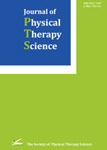
SPINE
Core stabilization exercise superior to standard for treatment of sub-acute non specific back pain
J Phys Ther Sci. 2018 Nov; 30(11): 1390–1395.38 patients with sub-acute non-specific low back pain (NSLBP) were randomized to receive 7 weeks of either Core Stabilization Exercise (CSE) therapy or 7 weeks of standard therapy (ultrasound and thermal treatment). Outcomes measured included lumbar joint repositioning error, pain intensity, and functional disability. The results demonstrated that CSE therapy was associated with significantly less lumbar joint repositioning error compared to the control group after 7 weeks of intervention, and 4 weeks after the cessation of treatment. Moreover, pain intensity and functional disability outcomes were significantly favourable in the CSE group compared to the control group after 4 and 7 weeks of intervention, as well as 4 weeks after the cessation of treatment.
Unlock the full ACE Report
You have access to {0} free articles per month.Click below to unlock and view this {1}
Unlock NowCritical appraisals of the latest, high-impact randomized controlled trials and systematic reviews in orthopaedics
Access to OrthoEvidence podcast content, including collaborations with the Journal of Bone and Joint Surgery, interviews with internationally recognized surgeons, and roundtable discussions on orthopaedic news and topics
Subscription to The Pulse, a twice-weekly evidence-based newsletter designed to help you make better clinical decisions
Exclusive access to original content articles, including in-house systematic reviews, and articles on health research methods and hot orthopaedic topics
Or upgrade today and gain access to all OrthoEvidence content for just $1.99 per week.
Already have an account? Log in


Subscribe to "The Pulse"
Evidence-Based Orthopaedics direct to your inbox.
{0} of {1} free articles
Become an OrthoEvidence Premium Member. Expand your perspective with high-quality evidence.
Upgrade Now












































































